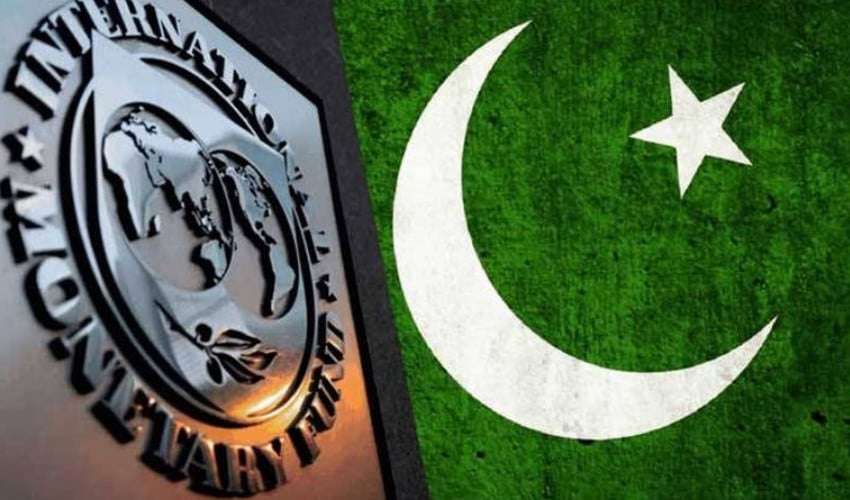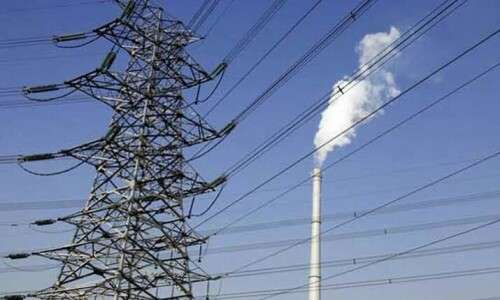ISLAMABAD: The $7 billion deal with the International Monetary Fund (IMF) is facing significant hurdles just a month after its approval, raising concerns among authorities about the need to either renegotiate the package or impose additional taxes that could further strain the economy.
Recent official statistics reveal that three out of four critical assumptions made to achieve a nearly Rs13 trillion tax target have already proven incorrect by the end of the first quarter of the current fiscal year. These assumptions include the economic growth rate, inflation, large-scale manufacturing, and import levels.
The federal government, having overly committed on behalf of the four provincial governments, finds itself in a challenging position as they also struggle to meet their targets following the implementation of the deal. Data from the first quarter (July-September) shows that tax collection targets set by the Federal Board of Revenue (FBR) and provincial cash surpluses have both fallen short. Deputy Prime Minister Ishaq Dar has publicly criticized the market-determined exchange rate regime, a key objective of the $7 billion Extended Fund Facility.
The IMF is exerting pressure on Pakistan to allow the rupee to devalue further, despite Dar’s assertion that the currency is already undervalued by at least 16%. The situation underscores the serious implementation challenges facing the IMF deal, which has been criticized for its flawed negotiation process. The Express Tribune previously reported concerns that Pakistan had entered into a problematic agreement with the IMF that could soon derail.
According to sources, aside from GDP growth, which remains within the anticipated range of 3%, the other three critical growth indicators—inflation, imports, and large-scale manufacturing—missed their targets in the first quarter. The average inflation rate was projected at 12.9%, yet it only reached 9.2% during this period.
The Ministry of Finance recently updated its inflation forecast, indicating expectations of inflation between 6-7% in October and further decreasing to 5.5-6.5% by November. To meet the ambitious Rs13 trillion tax target, the government had anticipated nearly 17% growth in imports, but actual growth was only 8% in the first quarter due to weakened demand. Large-scale manufacturing growth also lagged, achieving only 1.3% compared to the targeted 3.5%.
The FBR already faced a Rs90 billion tax shortfall in the first quarter, with internal assessments predicting the shortfall could widen to between Rs350 billion and Rs400 billion by December. In light of the disappointing results from the first quarter and early signs for the second quarter, the government may need to revisit the initial assumptions of the fiscal framework or continue pursuing unrealistic targets.
Contingency measures put in place by the IMF to address any shortfalls in tax revenue are likely to further hinder economic growth and reduce disposable incomes for most taxpayers. This situation calls for a comprehensive review of the IMF deal, as even a mini-budget is unlikely to achieve these unrealistic targets due to various complicating factors. Efforts to boost revenue through blocking legitimate tax refunds and requiring advance payments have not succeeded in meeting monthly tax goals.
Within official circles, there is a viewpoint suggesting that any savings from reduced interest rates should be accounted for against the FBR’s tax targets. The government has budgeted Rs9.8 trillion for debt servicing based on an average interest rate of 17.5% for the fiscal year. However, with inflation declining faster than anticipated, Deputy Prime Minister Ishaq Dar has hinted at potential interest rate cuts.
For this fiscal year, the IMF has set a tax target of Rs12.92 trillion, and the government has imposed additional taxes amounting to at least Rs1.2 trillion while promising further collections through enhanced enforcement measures.
The nominal increase in prices (inflation plus GDP growth) is expected to generate Rs1.57 trillion for the fiscal year. The estimated inflation impact for the first quarter was Rs281 billion, but only Rs130 billion was realized due to the single-digit inflation rate. The GST collection at the import stage was projected at Rs629 billion but only reached Rs482 billion, resulting in a shortfall of Rs147 billion largely compensated by increased income tax collections.
Due to stagnant import growth, customs duties collected were Rs276 billion, slightly above the estimated Rs266 billion. The outlook for the second quarter (October-December) appears even grimmer. With the initial assumptions leading to the deal being incorrect, the FBR anticipates an additional hit of at least Rs254 billion. The projected impact of autonomous growth for the second quarter is estimated at Rs484 billion, but the realized amount may not exceed Rs230 billion.
Publicly available indicators suggest that the FBR might face another shortfall of Rs125 billion due to low sales tax and excise duty collections domestically. The impact of import compression is expected to reduce revenues from all import taxes by approximately Rs320 billion. However, these losses could be partially offset by around Rs225 billion in excess income tax collections resulting from higher rates.
Provincial governments have also failed to demonstrate the required cash surpluses of Rs342 billion, falling short by Rs182 billion in the first quarter, which will further impede the primary budget surplus goal. Reluctantly, provincial governments have signed the National Fiscal Pact, but many critical conditions are likely to be unmet in the coming weeks.
MUST READ:
https://flarenews.pk/2024/10/31/england-captain-ben-stokes-home-burgled-while-on-pakistan-tour/

